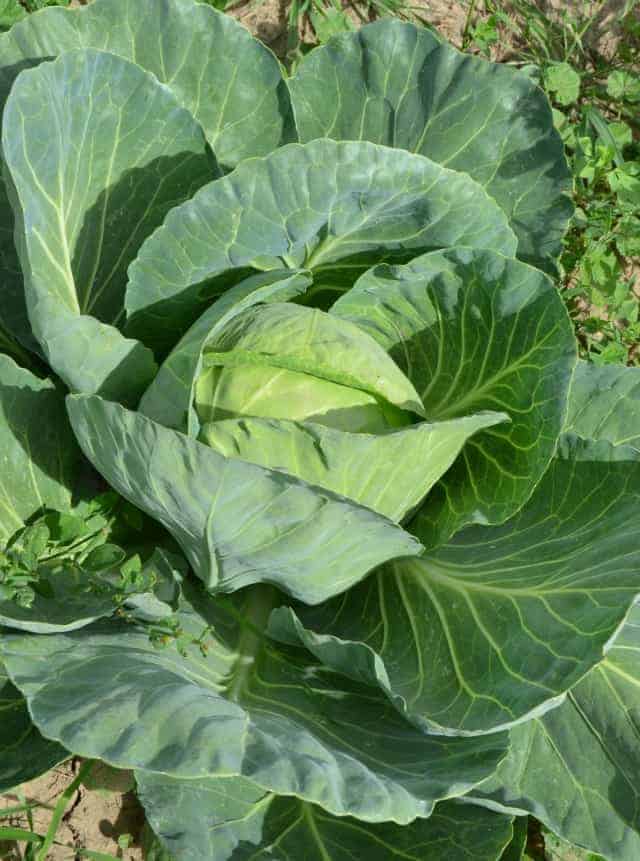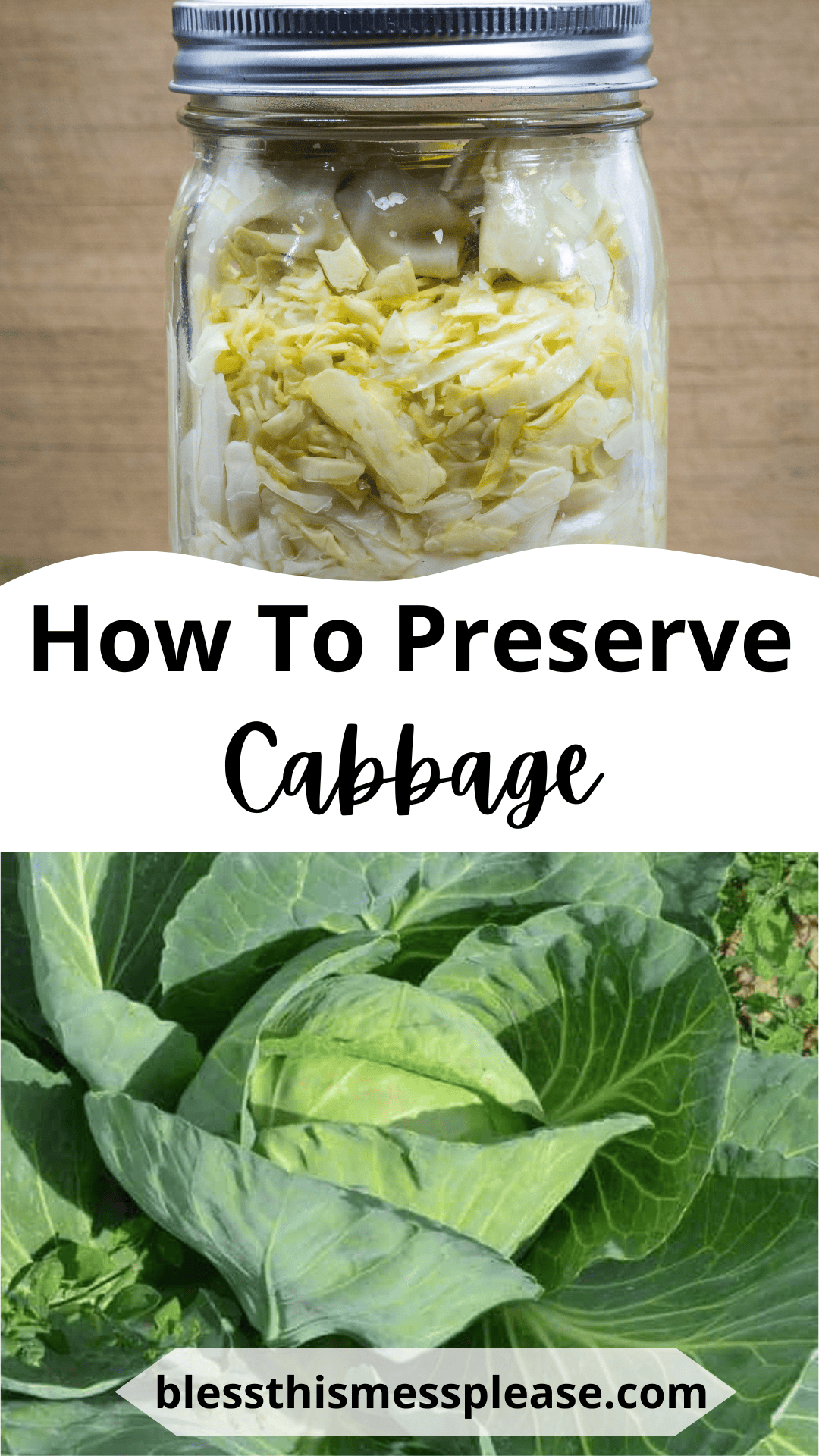This post may contain affiliate links. Please read our disclosure policy.
Learn using four effective methods – freezing, dehydrating, canning, and fermentation. Complete step-by-step guide to keep your cabbage fresh for months with expert tips and storage solutions.

These preservation techniques allow you to enjoy fresh, homegrown cabbage flavor throughout the entire year. Whether you have a bumper crop from your garden or found a great deal at the farmer’s market, you’ll never waste another head of cabbage again.
With four distinct preservation methods – freezing, dehydrating, canning, and fermentation – you can choose the technique that best fits your cooking style and storage capabilities. Each method produces different textures and flavors, giving you versatile ingredients for various recipes.

When the heads are fairly firm. Heads will split if over mature!
In the refrigerator
25 pounds
Fermentation vessels should be made out of stone, glass or food-grade plastic. Estimate that a 1 gallon container will be appropriate for up to 5 pounds of cabbage. Crocks should not be cracked or lined with metal.
Containers made of aluminum, copper, brass, iron, galvanized metal, or trash cans are not appropriate. Prior to fermentation, containers should be washed with warm water and soap.
Clean containers made of non-food-grade materials can be used if a food-grade plastic liner is used.
Working with 5 pounds of cabbage at a time, discard outer leaves and rinse in cold, clean water to remove soil or debris.
Cut the head of cabbage into pieces and remove the center core.
Shred into long thin strips, about the thickness of a quarter.
Combine 5 pounds of cabbage and 3 tablespoons of canning salt and mix well. Repeat this process until you have combined 25 pounds of cabbage and 3/4 cup of canning salt.
Transfer this mixture to an appropriate container. There should be 4 to 5 inches of headspace left at the top of the container.
The cabbage should be completely covered with liquid, so if there is not enough juice from the shredded cabbage to cover the cabbage, make a salt brine with 1 quart of water and 1½ tablespoons of canning salt. Pickling or canning salt is preferable since it does not contain iodine and anti-caking agents. The brine should be boiled and cooled to room temperature before adding to your cabbage mixture.
Weigh down the cabbage to keep it submerged in the liquid. A heavy plate or lid that fits down into the container can be used. Or use a double layer of food-grade plastic bags (like the resealable gallon-size freezer bags) and fill the top bag with brine for weight.
The cabbage should be covered by 1 to 2 inches of brine. Keeping the cabbage protected from oxygen will help limit mold growth during fermentation.

During the fermentation process, store the sauerkraut at 70-75° Fahrenheit. At this temperature, your sauerkraut should be fully fermented in about 3 to 4 weeks. At 60-65° Fahrenheit, the fermentation process may take 5 to 6 weeks.
If the temperature is above 75° Fahrenheit, the sauerkraut may become soft and lack flavor.
If the temperature is below 60° Fahrenheit, the fermentation may be sluggish and the proper acidity may not be achieved.
During fermentation, lactic acid bacteria are able to grow in the high salt environment and produce acid and flavors associated with fermented vegetables. Lactic acid bacteria are found naturally on the surface of vegetables, so you do not need to add in cultures as you might with other fermented food.
The salt you add and the acid produced by the bacteria will help control pathogenic bacterial contamination.
Consequently, .
The acid produced during the fermentation is what preserves the product. Lactic acid bacteria produce a variety of flavorful byproducts during fermentation. The most important of these is lactic acid, which contributes to the tartness and preservation of the finished kraut.
However, other acids and flavors are also made by the bacteria as they grow. The temperature at which the sauerkraut is stored impacts the development of these flavors and the lactic acid. At lower temperatures, growth occurs more slowly. Therefore, the fermentation process often takes longer when stored under cooler conditions.
When using a heavy plate, lid or jars to weigh down the cabbage, you need to check the sauerkraut 2 to 3 times a week and remove the scum if it forms. A thin film of yeast or mold (scum) may form on the surface of the fermentation brine.
When using a brine-filled bag as the weight, do not disturb the container until normal fermentation is completed (when the bubbling stops).
Chopped cabbage should be weighed in order to add the appropriate amount of salt for the fermentation. Once the fermentation is complete, the sauerkraut can be canned, refrigerated or frozen.
Pints: 10-20 minutes; Quarts: 15-25 minutes
Pints: 20-35 minutes; Quarts: 25-40 minutes

Frozen cabbage is suitable for use only as a cooked vegetable.
🍎🫙 Get a free Preserving Guide for all the details to dehydrate, can, and freeze 42 fruits and vegetables — get the FREE GUIDE here!
- Always ensure cabbage stays covered by 1-2 inches of brine during fermentation. Use a heavy plate, clean stone, or double-layer food-grade plastic bags filled with brine as weights. Exposure to air encourages mold growth and can ruin your batch.
- Process Frozen Cabbage Immediately After Thawing: Since frozen cabbage becomes soft and is only suitable for cooked dishes, plan to use it directly in soups, stir-fries, or casseroles without fully thawing. The texture change makes it perfect for dishes where the cabbage will be cooked down, and you’ll retain maximum nutritional value.

Did you use any of these preserving tips? Leave a note below in the comments or share it on Instagram, Facebook, or Pinterest!










